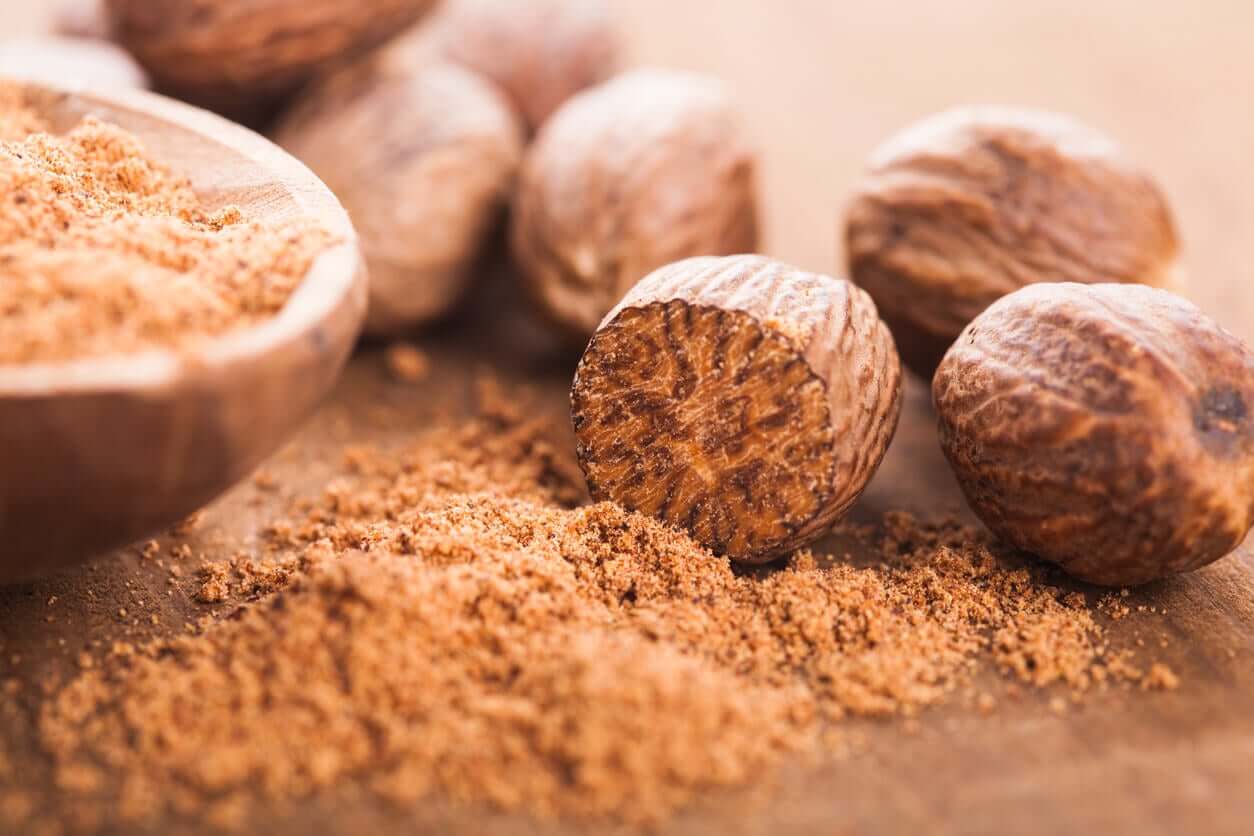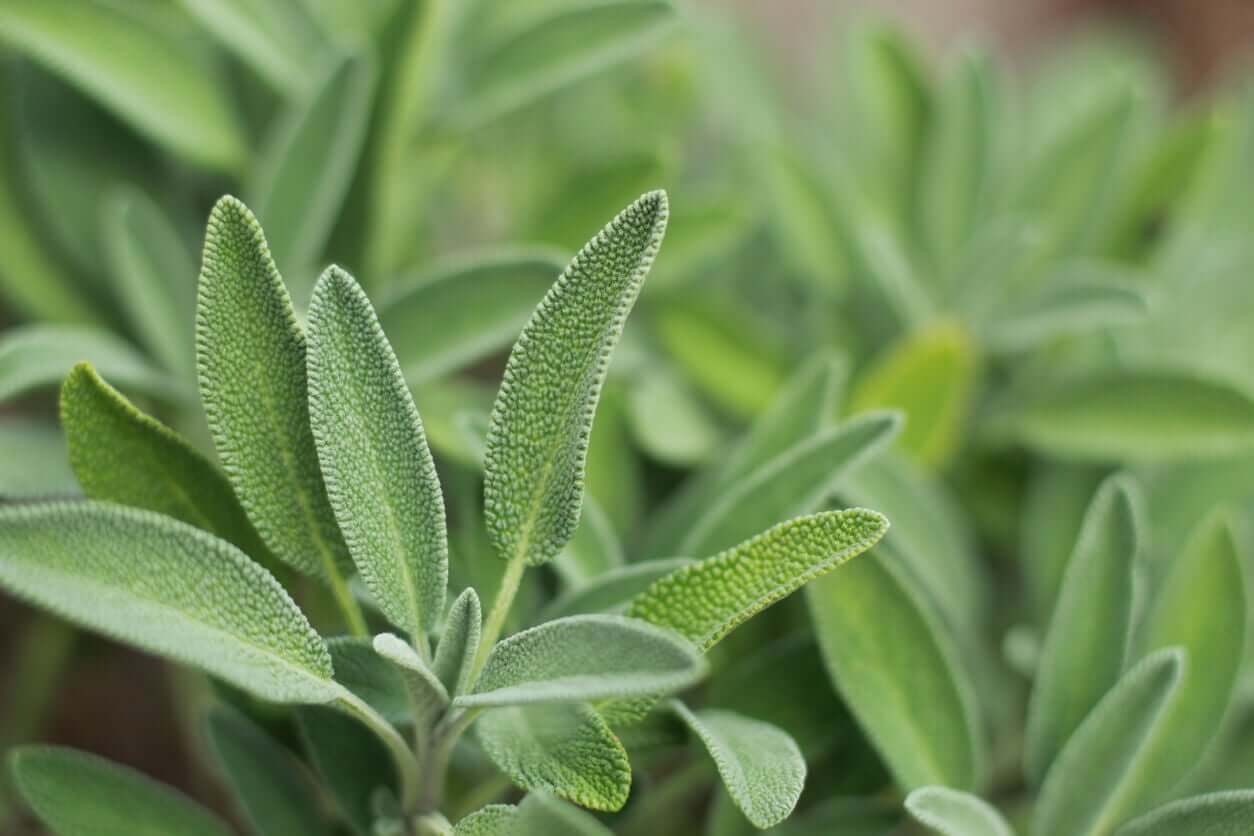8 Spices That Are Forbidden During Pregnancy

There’s a group of culinary spices that are forbidden during pregnancy, as consuming them can cause complications in the health of the mother and the baby. Some of these interfere with the proper development of the fetus, while others can cause miscarriages.
For this reason, it’s important to identify them and eliminate them from your diet as soon as possible. Below, we’ll tell you why.
Spices that are forbidden during pregnancy
As a general rule, the regular consumption of culinary spices is a very healthy habit. This is because they’re made up of a large number of phytonutrients, which function as natural antioxidants and help prevent certain complex pathologies. However, during pregnancy, they can cause problems, and, therefore it’s best to avoid them. Take note!
1. Nutmeg
This ingredient contains a substance called myristicin, which is capable of causing health problems when consumed in excess. Among them, neurological and psychiatric symptoms, as described in a study published in the journal Complementary Therapies in Medicine.
At any stage of life, it’s important not to exceed its use. However, during pregnancy, it’s best to avoid it altogether. This way, you avoid any possible damage to the fetus.

2. Cayenne
Cayenne doesn’t cause adverse health effects when you consume it in moderation. However, it’s possible that the heartburn and reflux that are typical of pregnancy worsen, which is why it’s best to avoid cayenne.
3. Cinnamon
This spice is usually highly recommended for people with metabolic diseases, due to its hypoglycemic properties. However, during pregnancy, it must be restricted because it has a relaxing effect on the uterine smooth muscle (the myometrium) and this predisposes women to miscarriages or premature births.
4. Cumin
Cumin is another of the spices with abortifacient abilities if pregnant women eat it in high doses. It’s best to avoid its presence in the diet of the pregnant woman, especially when it comes to concentrated presentations or as an oil. It’s much safer to use it in powder form if you want to add it to the preparation of certain dishes.
5. Licorice
Another of the spices that are forbidden during pregnancy is licorice (glycyrrhiza). This substance can cause certain changes in the health of the child in the future, as research published in the American Journal of Epidemiology states.
6. Fennel
Fennel can cause miscarriages in high doses, as well as predispose women to the appearance of cardiac arrhythmias and insomnia. Although there’s no solid evidence in this regard, it’s best to remove this spice from the diet during pregnancy.
7. Thyme
During the first 3 months of pregnancy, women should suppress the consumption of thyme. Then, they can reintroduce it into the diet under strict medical indications. This is because alterations could occur in the development of the fetal organs, a process that occurs mainly during the first trimester.
8. Sage
Sage is capable of causing arterial hypertension because it contains thujone among its components. In addition to favoring this disease, this substance can cause miscarriages during pregnancy, so it’s best to avoid it altogether.

Beware of the spices that are forbidden during pregnancy!
As you’ve seen, there are several spices that pregnant women shouldn’t consume. Otherwise, you could experience alterations in your health and that of your child.
You must bear in mind that, during pregnancy, you need to take care of the diet more than ever. It’s imperative that you to reinforce the intake of some foods and suppress that of others in order to ensure the correct development of your unborn child. If you make nutritional mistakes, the result can be fatal.
Likewise, you need to practice extreme measures regarding food hygiene and not eat raw or undercooked food. This could increase the risk of gastrointestinal infections during a very delicate period of your life.
All cited sources were thoroughly reviewed by our team to ensure their quality, reliability, currency, and validity. The bibliography of this article was considered reliable and of academic or scientific accuracy.
- Aljoher, A. M., Alsaeed, M. A., AlKhlfan, M. A., Almethen, A. W., Almukhaitah, M. A., Zareen, H., & Alia, S. I. (2018). Pregnant women risk perception of medications and natural products use during pregnancy in Alahsa, Saudi Arabia. The Egyptian Journal of Hospital Medicine, 70(1), 13-20.
- Beckerman, B., & Persaud, H., (2019). Nutmeg overdose: Spice not so nice. Complement Ther Med 2019 Oct;46:44-46. https://pubmed.ncbi.nlm.nih.gov/31519286/
- Brigham and Women’s Hospital. (2021). Cayenne. Consultado el 16 de febrero de 2023. https://healthlibrary.brighamandwomens.org/conditions/Pregnancy/19,Cayenne
- NIH. (2006). Drugs and Lactation Database. Nutmeg. Consultado el 16 de febrero. https://www.ncbi.nlm.nih.gov/books/NBK501838/
- European Medicine Agency (EMA). (2012). Public statement on the use of herbal medicine products containing thujone. Consultado el 16 de febrero de 2023. https://www.ema.europa.eu/en/documents/scientific-guideline/public-statement-use-herbal-medicinal-products-containing-thujone-revision-1_en.pdf
- Filardi T, Vari R, et al. (2020). Curcumin: could this compound be useful in pregnancy and pregnancy related complications? Nutrients. 12 (10): 3179. https://www.ncbi.nlm.nih.gov/pmc/articles/PMC7603145/https://www.ncbi.nlm.nih.gov/pmc/articles/PMC7603145/
- Gupta Ch, Prakash D. (2014). Phytonutrients as therapeutic agents. Journal of Complementary and Integrative Medicine. 11 (3): 151-69. https://pubmed.ncbi.nlm.nih.gov/25051278/
- John L. J, Shantakumari N. (2015). Herbal medicines use during pregnancy: a review form the Middle East. Oman Medical Journal. 30 (4): 299-236. https://www.ncbi.nlm.nih.gov/pmc/articles/PMC4561638/
- Khalki L, M’hamed S. B, et al. (2013). Prenatal exposure to fenugreek impairs sensorimotor development and the operation of spinal cord networks in mice. PlosOne. 8 (11). e80013. https://www.ncbi.nlm.nih.gov/pmc/articles/PMC3818278/
- Mahboubi M. (2019). Foenicum vulgare aș a valuable plant in management of women’s health. Journal of Menopausal Medicine. 25 (1): 1-14. https://www.ncbi.nlm.nih.gov/pmc/articles/PMC6487283/
- National Center for Complementary and Integrative Health. (2020). Cinnamon. U. S. Department of Health and Human Services. Consultado el 16 de febrero de 2023. https://www.nccih.nih.gov/health/cinnamon
- National Center for Complementary and Integrative Health. (2020). Fenugreek. U. S. Department of Health and Human Services. Consultado el 16 de febrero de 2023. https://www.nccih.nih.gov/health/fenugreek
- National Center for Complementary and Integrative Health. (2020). Ginger. U. S. Department of Health and Human Services. Consultado el 16 de febrero de 2023. https://www.nccih.nih.gov/health/ginger
- National Center for Complementary and Integrative Health. (2020). Sage. U. S. Department of Health and Human Services. Consultado el 16 de febrero de 2023. https://www.nccih.nih.gov/health/sage
- Räikkönen K, Martikainen S, et al. (2017). Maternal Licorice Consumption During Pregnancy and Pubertal, Cognitive, and Psychiatric Outcomes in Children. American journal of epidemiology. 185(5), 317–328. https://pubmed.ncbi.nlm.nih.gov/28158597/
- Poma A, Fontecchio G, et al. (2012). Anti-inflammatory properties of drugs from saffron crocus. Anti-inflammatory & Anti-allergy agents in Medicinal Chemistry. 11 (1): 37-51. https://pubmed.ncbi.nlm.nih.gov/22934747/
- U. S. Food and Drug Administration. (2022). Pregnancy. Consultado el 16 de febrero de 2023. https://www.fda.gov/consumers/womens-health-topics/pregnancy
This text is provided for informational purposes only and does not replace consultation with a professional. If in doubt, consult your specialist.








